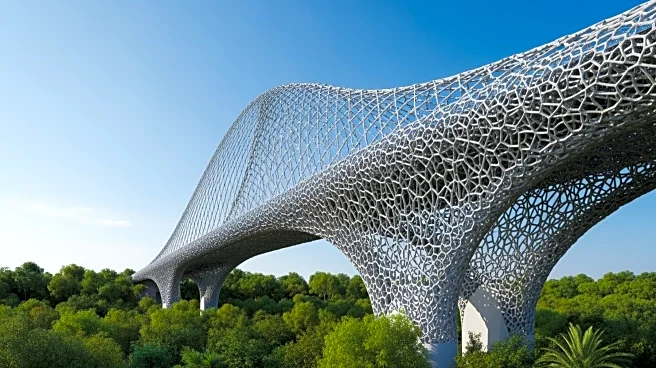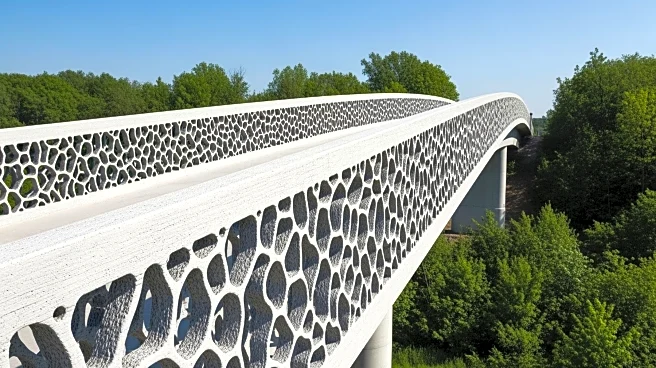What's Happening?
A research team at the University of Pennsylvania has developed a 3D-printed pedestrian bridge that significantly reduces carbon emissions associated with cement production. The project, named Diamanti, utilizes a sustainable concrete mixture and a material-saving
design inspired by natural bone structures. This innovative approach allows the bridge to use 60% less material while maintaining mechanical strength. The enhanced concrete mixture absorbs 142% more carbon dioxide than conventional mixes. The project, launched in 2022 with support from the US Department of Energy and Swiss chemical company Sika, is preparing to build its first full-size prototype in France.
Why It's Important?
The development of the Diamanti bridge addresses the significant carbon footprint of the cement industry, which accounts for approximately 8% of global greenhouse emissions. By reducing material usage and enhancing carbon absorption, this project offers a potential solution to mitigate the environmental impact of concrete, a widely used construction material. The success of this initiative could lead to broader adoption of similar technologies, potentially transforming construction practices and contributing to global efforts to reduce carbon emissions. Stakeholders in the construction and environmental sectors stand to benefit from these advancements.
What's Next?
The Diamanti team is set to construct its first full-scale bridge in France, with the location yet to be finalized. The project will continue to explore other architectural applications, such as prefabricated floor systems, to expand the use of its innovative concrete mixture. The team will closely monitor and evaluate the structure's performance in real-world conditions, aiming to demonstrate the feasibility and benefits of their approach. This could pave the way for further developments in sustainable construction technologies.
Beyond the Headlines
The Diamanti project highlights the potential for biomimicry in engineering, where natural structures inspire innovative designs that enhance functionality and sustainability. The use of diatomaceous earth in the concrete mixture also raises considerations about the supply chain and availability of raw materials for large-scale adoption. As the construction industry seeks to reduce its carbon footprint, projects like Diamanti could lead to a paradigm shift in how materials are sourced and utilized, promoting a more sustainable future.















